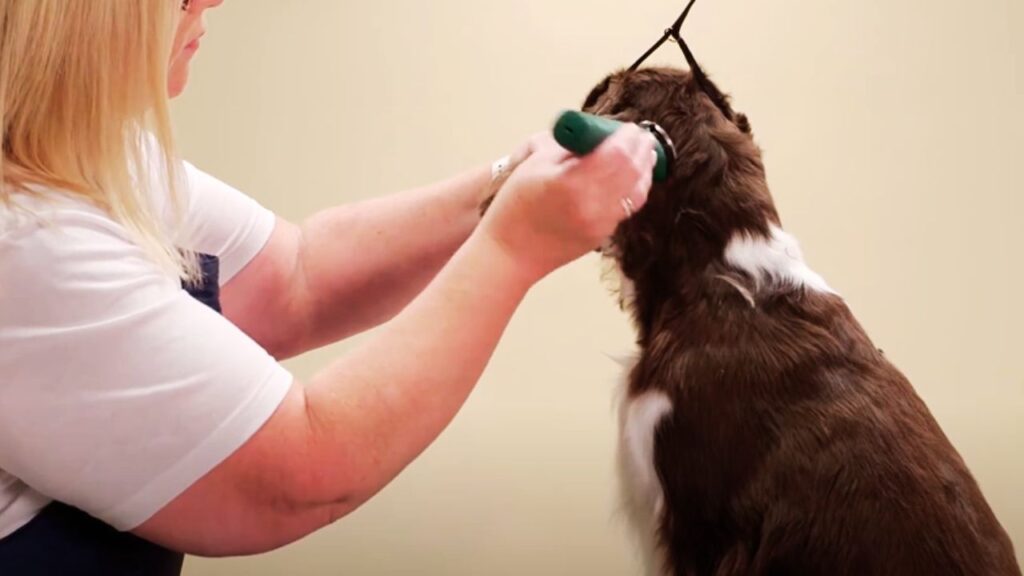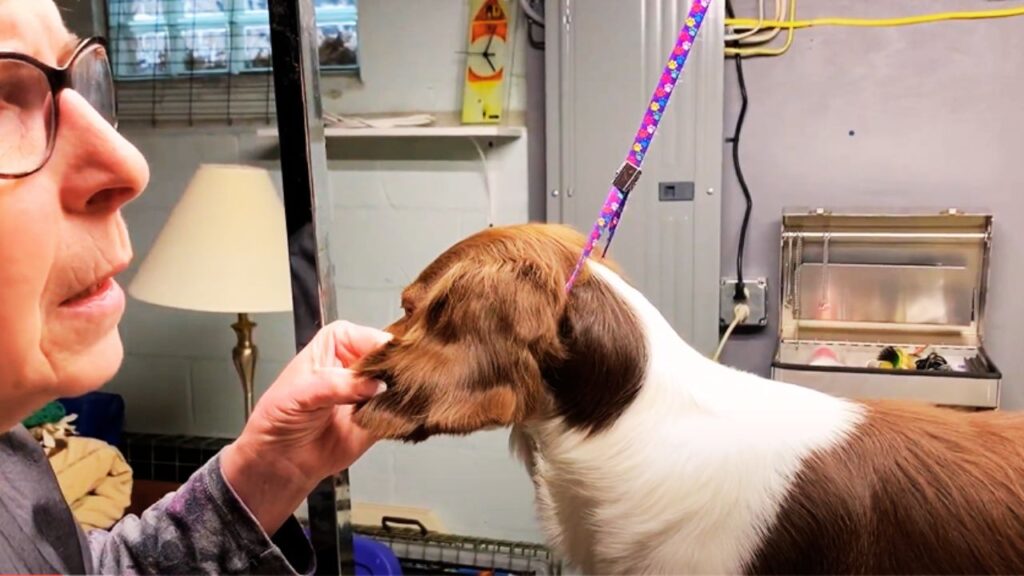The main difference between a Brittany Spaniel and a Springer Spaniel lies in their physical traits, temperament, grooming needs, and overall care requirements. Brittanys are generally smaller, weighing between 30-40 pounds, while Springer Spaniels weigh 40-50 pounds.
The Brittany has a shorter, denser coat, whereas the Springer Spaniel sports a longer, wavier coat with feathering, which requires more grooming. So, what is the difference between a Brittany Spaniel and a springer spaniel? Discover the perfect collar size for an Anatolian Shepherd Dog to ensure comfort and security for your furry friend.
Blog Highlights
Toggle1. What Is the Difference Between a Brittany Spaniel and a Springer Spaniel?
The Brittany Spaniel and Springer Spaniel are both members of the sporting group, specifically bred for hunting and retrieving. Over the years, they have gained popularity not only as hunting companions but also as family pets due to their affectionate and playful nature.
To save your time, I’ve mentioned this quick overview table for you:
The Brittany, sometimes simply referred to as “Brittany,” originates from France, while the Springer Spaniel—both the English Springer Spaniel and Welsh Springer Spaniel—hails from the United Kingdom. Both breeds have served well as bird dogs and excel in field trials, with a strong instinct to work and bond with their owners.
2. Physical Differences
Coat, Ears, and Tail
The physical differences between the two breeds are apparent in their coat types, ears, and tails. The Springer Spaniel has a long, wavy coat with feathering along the chest, legs, and ears, giving them a fluffy, regal appearance. The Brittany has a shorter, denser coat with no notable feathering, making their grooming requirements slightly easier to manage.

In terms of their ears, the Springer Spaniel has longer, fluffier ears compared to the Brittany’s shorter, sleeker ears. Brittany ears do not have as much feathering, making them less prone to matting and tangling. Learn more about the unique double-layered coat of an Anatolian Shepherd and how to care for it effectively.
The tails also vary between the breeds. The Springer Spaniel generally has a long, feathery tail, while the Brittany usually has a short or docked tail. This difference in tail length is also influenced by their roles as hunting dogs—Brittanys are often docked to prevent tail injuries during fieldwork.
Size and Weight
Though they are close in size, subtle differences exist:
- English Springer Spaniel: 19 to 20 inches tall and 40 to 50 pounds in weight.
- Brittany Spaniel: 17.5 to 20.5 inches tall and 30 to 40 pounds.
The Springer Spaniel is generally heavier, which contributes to its more robust and sturdy build. Brittanys are leaner and lighter, giving them a more athletic, agile look.
3. Temperament Differences
Family Friendliness
The Springer Spaniel is known for being affectionate, highly devoted, and extremely good with young children, making them an ideal family pet. They are eager to please and thrive in a family environment where they are constantly surrounded by their human companions. Springers are more inclined to cuddle up next to you and will often look for physical affection, which they crave almost as much as they need exercise.

In contrast, the Brittany Spaniel is also a loving family pet, but it tends to be more independent and reserved around strangers. This makes them less of a cuddler but no less loyal. Brittanys enjoy socializing but may require early socialization to avoid becoming shy or anxious around new people.
Their slightly aloof nature makes them less immediately affectionate compared to the Springer Spaniel, but they are just as devoted once they build a bond with their family. For insights on whether Pomeranians should wear a collar, including considerations for safety and alternatives, check out this informative article.

Compatibility with Children and Pets
Springer Spaniels are generally more tolerant of children and other pets, especially when well-socialized from a young age. They are considered more adaptable and accepting of chaotic households that may include young children and other animals. Brittany Spaniels also get along well with children, but their more sensitive nature means they do better with older children who understand how to treat them gently.
Sensitivity and Independence
The Brittany can be sensitive to harsh corrections—often, a stern look or verbal reprimand is enough to get their attention and modify their behavior. On the other hand, the Springer Spaniel tends to be slightly more headstrong, sometimes requiring a firmer hand during training sessions.
Socialization and Strangers
Both breeds benefit from early and ongoing socialization to ensure they grow into well-adjusted adults. However, Springer Spaniels are naturally more sociable and will readily approach new people, while Brittany Spaniels may need more time to warm up. Brittanys tend to be more reserved and may take a cautious approach to strangers.
This trait makes them excellent watchdogs as they are more alert to unfamiliar situations, whereas Springer Spaniels may be more likely to greet new arrivals with wagging tails and enthusiasm. For a comprehensive guide on what kind of harness is best for a Pomeranian, including comfort and safety tips, check out this article.
4. Trainability and Intelligence
When it comes to trainability, both the Brittany Spaniel and Springer Spaniel are highly intelligent and capable of learning a wide range of commands and tricks. They rank well on canine intelligence scales—English Springer Spaniels ranked 13th, while Brittany Spaniels ranked 23rd out of 138 breeds in a notable study on dog intelligence.
This means both breeds are highly capable of mastering obedience and agility training, although Springer Spaniels may learn a bit faster due to their eagerness to please.
Training Tips
- Springer Spaniels respond well to training that includes positive reinforcement, such as treats, praise, and playtime. They do well with consistent training routines that keep them mentally stimulated.
- Brittany Spaniels are also quick learners but may require a bit more patience, especially if they sense any harshness. Gentle encouragement and positive reinforcement work best for Brittanys, and keeping training sessions varied helps prevent boredom.
Both breeds are suitable for competitive dog sports, such as agility, rally, and field trials. Their instinct for hunting and retrieving makes them particularly proficient in outdoor activities, which also helps burn off their high energy levels.

5. Health Concerns
Common Health Issues
Both breeds share some similar health concerns, but there are also differences:
- Springer Spaniel Health Concerns:
- Hip Dysplasia: A common joint issue that can lead to arthritis.
- Progressive Retinal Atrophy (PRA): A condition that leads to the gradual deterioration of vision.
- Bloat: A potentially life-threatening condition involving stomach twisting.
- Phosphofructokinase Deficiency (PFK): A genetic disorder that affects energy production in the muscles.
- Brittany Spaniel Health Concerns:
- Hip Dysplasia: Just like Springers, Brittanys can be affected by joint problems.
- Epilepsy: Brittanys are prone to seizures, which can vary in severity.
- Hypothyroidism: A condition involving reduced thyroid hormone production.
- Ear Infections: Due to their drooping ears, both breeds are prone to infections if their ears are not kept clean and dry.
Lifespan
The Brittany Spaniel tends to have a slightly longer lifespan, averaging 12 to 14 years, compared to the Springer Spaniel, which averages 10 to 12 years. Regular veterinary care and a balanced diet are essential for both breeds to maintain their health and longevity. Discover if the American Eskimo is a guard dog and learn about its suitability for protecting your home.

6. Exercise Requirements
Both the Brittany Spaniel and the Springer Spaniel have high energy levels, making them well-suited for active owners who enjoy outdoor adventures. They require at least 60 to 90 minutes of exercise per day. Activities such as hiking, running, agility training, and playing fetch are ideal for both breeds.
Differences in Exercise Preferences
Springer Spaniels often enjoy activities involving water—these dogs are natural swimmers, and swimming can be an excellent way to provide both exercise and enrichment. If you live near a body of water, this can be a great activity to include in your dog’s routine.

Brittany Spaniels, meanwhile, excel in fieldwork and love to run. They enjoy wide-open spaces where they can roam and explore, making them particularly well-suited to environments where they can engage their instinct to point and retrieve. Brittanys are more inclined to cover ground quickly and are less likely to stay close to their owner while off-leash compared to Springers.

Mental Stimulation
Mental stimulation is just as important as physical exercise for both breeds. Training sessions, interactive puzzle toys, and obedience drills help keep these intelligent dogs mentally engaged, preventing boredom and the destructive behaviors that can result from a lack of stimulation. Learn about the size collar for an American Eskimo to ensure a perfect fit and comfort for your dog.
7. Grooming Needs
Springer Spaniels require more grooming than Brittany Spaniels due to their longer, feathered coat. Brushing at least three to four times a week is recommended to prevent matting, and they should be professionally groomed every six to eight weeks. Regular ear cleaning is also essential due to their long, droopy ears that can trap moisture and lead to infections.

Brittany Spaniels have shorter coats, making them easier to maintain. They require brushing once or twice a week, and their grooming needs are generally less demanding. However, just like Springer Spaniels, Brittanys are prone to ear infections, so their ears should be cleaned regularly.

Neither breed is considered hypoallergenic, so potential owners with allergies may need to consider other breeds. Discover why Afghan Hound collars are wide by exploring the unique characteristics of this breed and how wide collars enhance their comfort and style.
8. Popularity and Historical Background
Historical Background
The English Springer Spaniel and Brittany Spaniel both have histories rooted in hunting and fieldwork. The Springer Spaniel was originally bred in England to help hunters locate and “spring” game from hiding, giving the breed its name. The Brittany was bred in France, specifically to point and retrieve birds for hunters. Their compact size, agility, and stamina made them ideal partners for hunters in dense forests and open fields alike.

Popularity
In the United States, Springer Spaniels are slightly more popular, ranking 26th in the American Kennel Club’s popularity list, while Brittanys are 27th. However, in France, the Brittany is significantly more popular, given its French origins. The popularity of these breeds also varies by region within the U.S.—for instance, Brittany Spaniels are more commonly found in states like Utah, Kentucky, and Missouri, where they are favored for their hunting skills.
I’ve Answered Some Related Queries
1. Which breed is larger, the Brittany or the Springer Spaniel?
The Springer Spaniel is generally larger, standing 19-20 inches tall and weighing 40-50 pounds, compared to the Brittany, which stands 17.5-20.5 inches and weighs 30-40 pounds.
2. Which breed requires more grooming?
The Springer Spaniel requires more grooming due to its longer, wavy coat with feathering, which needs brushing several times a week. The Brittany, with its shorter coat, needs less maintenance—typically only brushing 1-2 times a week.
3. Which breed is more affectionate?
The Springer Spaniel tends to be more affectionate and family-oriented, often being more sociable with strangers and enjoying close contact with its family. The Brittany is also friendly but can be more reserved and independent.
4. Are Brittany Spaniels good with kids?
Yes, Brittany Spaniels are good with kids, but they tend to do better with older children who understand how to be gentle. Springer Spaniels are generally more tolerant and adaptable with young children.
Which Breed Is Right for You?
Choosing between a Brittany Spaniel and a Springer Spaniel largely depends on your lifestyle, personality, and what you’re looking for in a dog.
- Active Families and Affectionate Companions: If you’re seeking a family-oriented dog that loves being the center of attention, the Springer Spaniel may be the better choice. They are loyal, affectionate, and fantastic with children, making them an excellent choice for families.
- Independent but Devoted Companions: The Brittany Spaniel is perfect for someone looking for a slightly more independent, adventurous dog. They are active, curious, and enjoy exploring their surroundings, making them a great match for owners who love hiking or have large, open spaces where their dog can roam.
- Grooming Commitment: If grooming is a major consideration, then the Brittany Spaniel might be more appealing due to its lower grooming needs compared to the Springer Spaniel. On the other hand, if you’re prepared for the grooming commitment and enjoy taking care of a longer coat, the Springer Spaniel’s beautiful, feathered fur can be well worth the effort.
Regardless of which breed you choose, you’re opting for a loyal, intelligent, and energetic companion. Both the Springer Spaniel and Brittany Spaniel thrive in active homes where they are loved, exercised, and included in daily activities. Hope so, now you know what is the difference between a Brittany Spaniel and a springer spaniel? Find out what style dog collar is best for hounds to ensure comfort and safety for your furry friend.





